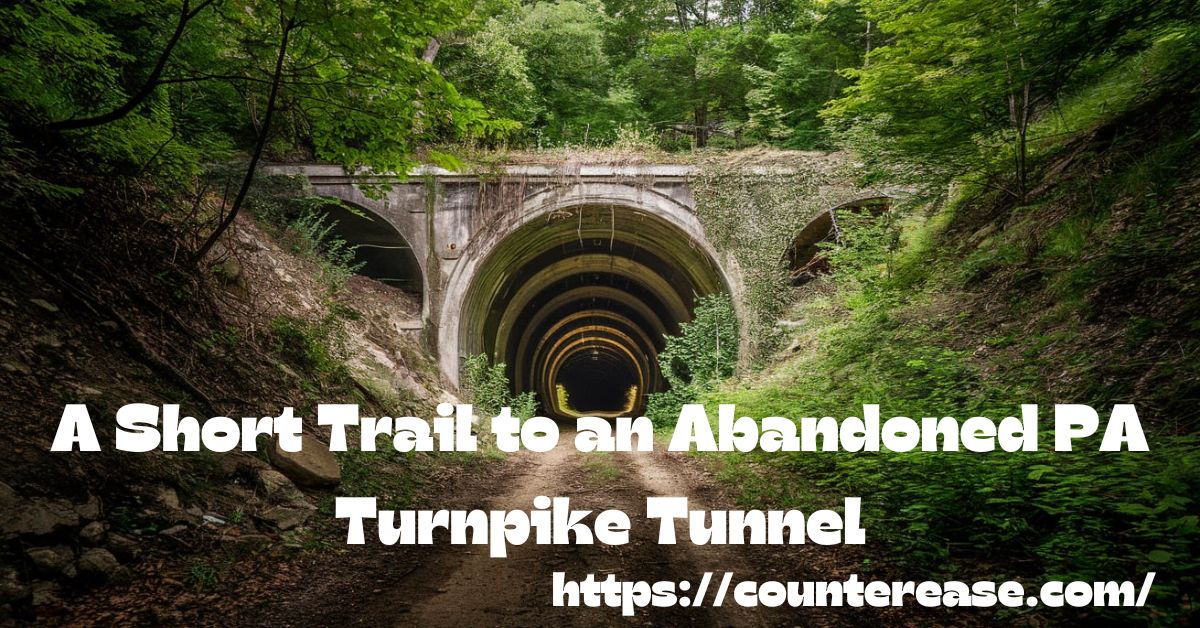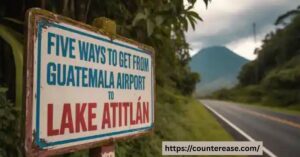The Abandoned PA Turnpike Tunnel Trail is a hidden gem for adventure seekers, history buffs, and urban explorers. This offbeat trail follows a desolate stretch of the Pennsylvania Turnpike, decommissioned in the 1960s and left to nature’s embrace. Once a bustling highway, this eerie yet fascinating path now welcomes hikers and cyclists eager to traverse its ghostly tunnels, weathered pavement, and overgrown surroundings. The experience offers an extraordinary mix of history, decay, and raw beauty, making it one of the most unique trails in Pennsylvania.
Stepping onto this trail feels like entering a post-apocalyptic world where time stands still. Towering tunnels loom ahead, their dark, cavernous interiors echoing every footstep. Graffiti-covered walls tell silent stories, while shafts of light pierce through ventilation openings, creating a cinematic glow. The contrast of abandoned infrastructure and wild overgrowth makes this spot irresistible for photographers, thrill-seekers, and anyone craving a break from ordinary hiking trails.
Unlike typical scenic routes, the Abandoned PA Turnpike Tunnel Trail immerses visitors in a forgotten chapter of American highway history. The nearly five-mile stretch, which includes the infamous Sideling Hill and Rays Hill tunnels, offers a thrilling mix of exploration and nostalgia. Whether you’re biking through the darkness or walking beneath the crumbling concrete arches, the sense of discovery never fades. With its haunting charm and surreal atmosphere, this trail isn’t just a walk in the woods—it’s an unforgettable journey through time.
The Ghost Highway’s Hidden Gem
The story of Sideling Hill Tunnel reads like a chapter from an American infrastructure epic. Located in Buchanan State Forest, this engineering marvel sits roughly halfway between Philadelphia and Pittsburgh, offering a unique glimpse into the evolution of American transportation.
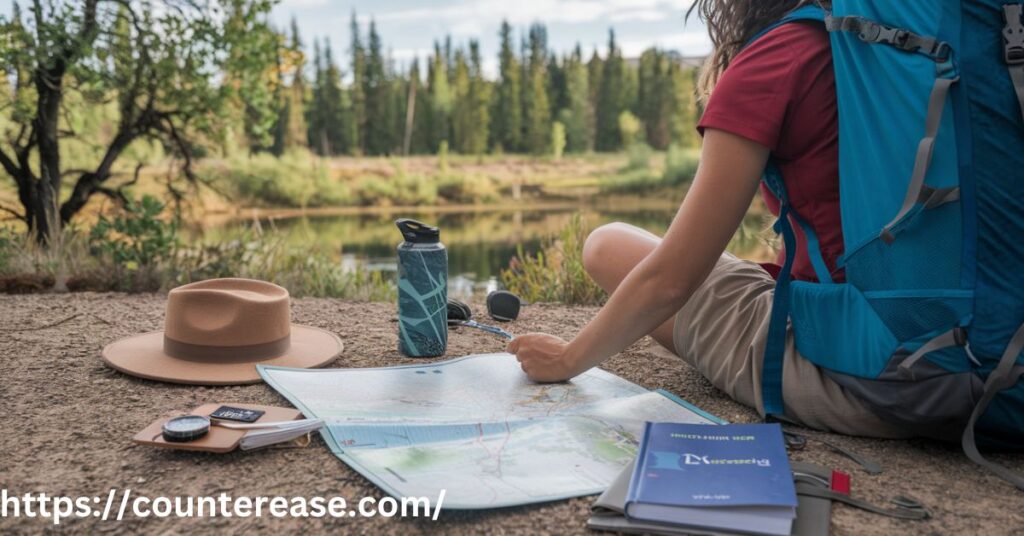
Site Specifications:
- Tunnel Length: 6,782 feet (1.28 miles)
- Original Construction Cost: $17 million (1940)
- Maximum Height: 23.5 feet
- Width: 23 feet
- Year Abandoned: 1968
- Current Trail Length to Tunnel: 1.1 miles
- Elevation: 1,284 feet at eastern portal
The Rise and Fall of Sideling Hill Tunnel
The Railroad Origins
In 1883, William H. Vanderbilt envisioned a railway that would challenge the Pennsylvania Railroad’s monopoly. His railroad project began carving through the Appalachian Mountains, creating nine tunnels – including Sideling Hill. However, financial troubles halted construction in 1885, leaving these tunnels unused for decades.
The Turnpike Era
When the Pennsylvania Turnpike Commission formed in 1937, they saw an opportunity in these abandoned railroad tunnels. The historical infrastructure timeline tells the story:
| Year | Milestone |
|---|---|
| 1937 | Turnpike Commission acquires tunnels |
| 1938 | Reconstruction begins |
| 1940 | Original turnpike opens |
| 1955 | Traffic reaches capacity |
| 1963 | Bypass planning starts |
| 1968 | Tunnel abandoned |
The Bypass Decision
Traffic growth in the 1960s forced a critical decision. Engineers considered several options:
- Widening the existing tunnel
- Building a parallel tunnel
- Creating a bypass
- Adding traffic control systems
The bypass won out, costing $17.2 million but promising better traffic flow and reduced maintenance.
The Abandoned PA Turnpike: A Time Capsule
Today’s abandoned Pennsylvania Turnpike stands frozen in time, stretching 13 miles through the Appalachian Mountains. When you visit, you’ll find yourself walking on the same pavement that carried countless vehicles during America’s post-war boom. The preservation of this site happened almost by accident – when the bypass opened in 1968, this section of highway simply fell silent, leaving behind a perfectly preserved slice of American transportation history.
What makes this site truly remarkable is how much original infrastructure remains intact. The old toll booths have weathered away, but you’ll still find original mile markers dotting the path, their reflective paint catching your flashlight beam. Emergency pull-offs line the tunnel’s interior, each numbered and tiled just as they were when the last car passed through. The ventilation buildings, though abandoned, still house massive fans that once cleared exhaust from thousands of passing vehicles.

Today’s abandoned PA turnpike tunnel offers visitors a unique blend of history and adventure. The site features:
Historical Elements Still Visible:
- Original mile markers
- Tunnel ventilation buildings
- Emergency pull-off areas
- Drainage systems
- Original pavement sections
- Railroad construction marks
- Vintage lighting fixtures
| Original Features Still Visible | Condition | Location |
|---|---|---|
| Mile Markers | Partially weathered | Every mile along trail |
| Emergency Pull-offs | Well preserved | Inside tunnel |
| Ventilation Buildings | Standing structure | Both tunnel entrances |
| Original Pavement | Mostly intact | Entire trail length |
| Drainage Systems | Functional | Throughout trail |
| Guard Rail Posts | Rusted but stable | Trail edges |
| Light Fixtures | Non-functional | Tunnel interior |
Planning Your Adventure
The key to an unforgettable tunnel exploration lies in timing your visit right. I’ve found that each season transforms the trail in unique ways. Spring brings carpets of wildflowers along the approach path, while fall paints the surrounding forest in brilliant reds and golds. Summer offers the most comfortable tunnel temperatures, as the constant 55-degree interior provides natural air conditioning. Winter creates stunning ice formations near the tunnel entrances, though you’ll need extra caution during frozen conditions.
Light plays a crucial role in your experience. The tunnel’s darkness is absolute – so complete that it can disorient even experienced hikers. That’s why I recommend visiting during “golden hours” – just after sunrise or before sunset. These times offer the most dramatic lighting for photographs and create stunning silhouettes of the tunnel portals.
Photography Planning
For the best shots:
Golden Hour Tips:
- Sunrise: 30 minutes before to 1 hour after
- Sunset: 1 hour before to 30 minutes after
- Portal silhouettes work best
- Long exposures most effective
| Season | Best Time to Visit | Unique Features | Photography Tips |
|---|---|---|---|
| Spring | 8am – 11am | Wildflowers, mild temps | Macro shots of flora |
| Summer | 7am – 10am or 4pm – 7pm | Full tree canopy | Long exposure in tunnel |
| Fall | 9am – 4pm | Foliage colors | Portal silhouettes |
| Winter | 10am – 3pm | Ice formations | Dawn/dusk portal shots |
Essential Trip Prep: Your Complete Guide
Don’t let the trail’s short length fool you – proper preparation makes the difference between a fascinating adventure and a uncomfortable experience. I’ve seen too many visitors arrive with just their phone flashlights, only to turn back halfway through the tunnel. The key is understanding that you’re not just taking a short walk – you’re exploring an underground structure nearly a mile and a half long.

Your Complete Guide
First, consider your lighting. You’ll need at least two sources: a primary flashlight with minimum 500 lumens and a backup. The tunnel’s darkness swallows light, so bring more than you think you’ll need. I always pack extra batteries too – the cold tunnel interior can drain them faster than usual.
Your footwear matters more than you might expect. The tunnel floor remains damp year-round, and original drainage channels can create unexpected wet spots. Waterproof hiking shoes or boots provide the best combination of grip and protection.
| Essential Gear | Purpose | Recommended Specs |
|---|---|---|
| Primary Flashlight | Main illumination | 500+ lumens, waterproof |
| Backup Light | Emergency use | 200+ lumens, compact |
| Extra Batteries | Power backup | 2 sets per light |
| Footwear | Protection & grip | Waterproof hiking shoes |
| Water | Hydration | 1 liter per person |
| First Aid Kit | Emergency care | Basic kit with bandages |
| Camera | Documentation | Weather-sealed preferred |
| Warm Layer | Temperature control | Moisture-wicking fabric |
Remember, cell phone service disappears completely inside the tunnel. I always tell someone my planned return time and carry a basic first aid kit. The trail might be short, but being prepared lets you focus on exploring rather than worrying about basic needs.

The main access point lies near Waterfall, Pennsylvania. Here are your navigation details:
GPS Coordinates:
- Parking Area: 40.0499° N, 78.1606° W
- Eastern Tunnel Portal: 40.0492° N, 78.1617° W
Driving Directions:
- From US-30: Head south on OR-915
- Look for the gravel parking lot on your right
- Watch for the small trail marker indicating the Pike2Bike trail
Essential Equipment
Basic Gear:
- High-powered flashlight (500+ lumens)
- Backup batteries
- Secondary light source
- Sturdy walking shoes
- Weather-appropriate clothing
- Water (1 liter per person minimum)
- Trail snacks
- Basic first aid kit
- Cell phone (limited service)
- Camera equipment
Photography Gear:
- Tripod for long exposures
- Wide-angle lens
- Remote shutter release
- Extra batteries
- Lens cleaning kit
Safety Considerations
The tunnel environment presents unique challenges:
Temperature Variations:
- Tunnel stays 50-55°F year-round
- Can feel 10-15 degrees cooler than outside
- Moisture can make it feel colder
- Bring layers regardless of season
Safety Precautions:
- Never explore alone
- Check weather forecast
- Share your plans with someone
- Bring emergency supplies
- Know your exit points
- Keep children close
- Watch for loose debris
Walking Through History: Detailed Trail Guide
The flat trail to the tunnel offers a unique window into Pennsylvania’s transportation history.
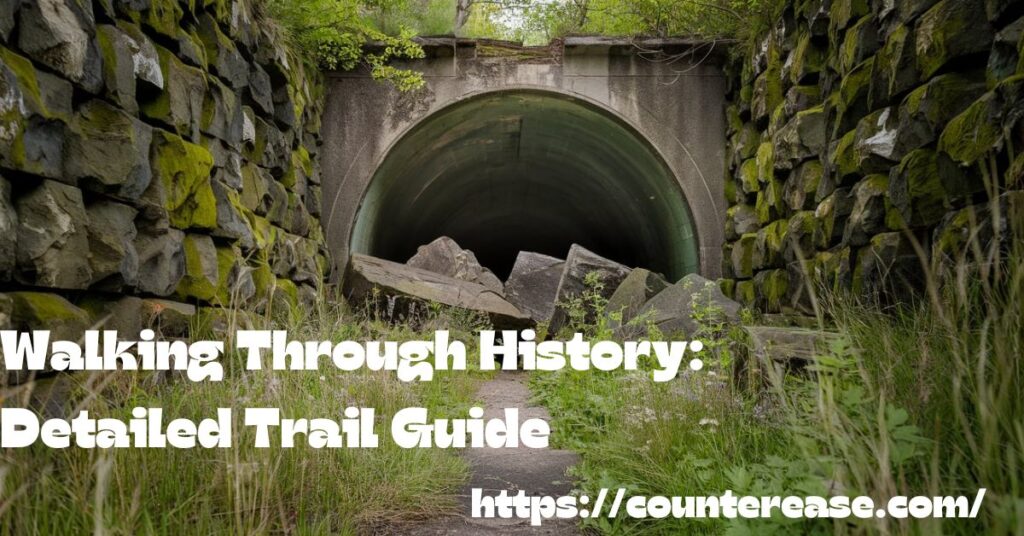
Let’s break down your journey section by section.
First section: Trailhead to First Bend (0.2 miles)
- Packed gravel surface
- Gentle grade
- Original guardrail remnants
- Historic mile marker at 0.1 miles
- Native woodland plants
Second section: The Historic Corridor (0.4 miles)
- Mixed hardwood forest
- Visible drainage systems
- Original pavement sections
- Wildlife viewing opportunities
- Spring wildflower displays
Third section: Tunnel Approach (0.5 miles)
- Opening views of portal
- Original lighting fixtures
- Ventilation building remains
- Photo opportunities
- Information panels
Inside Sideling Hill Tunnel: A Portal Through Time
Entering the tunnel transports you to another era. Here’s what you’ll find inside:
Architectural Features:
- Art Deco portal design
- Original tile work (white ceramic)
- Ventilation ducts
- Emergency pull-offs every 1,000 feet
- Original light fixture mounts
- Drainage channels
- Railroad construction marks
Tunnel Segments:
1.Entry Portal (0-500 feet)
- Transition lighting zone
- Original tile work best preserved
- Emergency phone locations visible
2.Main Tunnel (500-6,282 feet)
- Complete darkness
- Consistent temperature
- Echo effects
- Original road surface
3.Exit Portal (6,282-6,782 feet)
- Natural light returns
- Ventilation building ruins
- Original signage remains
Beyond the Tunnel: Expanding Your Adventure
The area around Sideling Hill offers numerous additional experiences for the curious explorer.
Nearby Historical Sites
Lincoln Highway Heritage:
- Original roadbed sections
- Historic markers
- Vintage gas stations
- Period architecture
- Interpretive centers
Local Historical Attractions:
- Bedford Springs Resort (1796)
- Fort Bedford Museum
- Old Log Church (1806)
- Covered bridges
- Historic downtown Bedford
Natural Attractions
The surrounding Buchanan State Forest offers:
- 75+ miles of hiking trails
- Mountain biking routes
- Rock climbing areas
- Wildlife viewing
- Native plant species
- Scenic vistas
- Camping opportunities
Photography Guide: Capturing the Perfect Shot
Whether you’re a professional or amateur photographer, the tunnel offers unique opportunities.
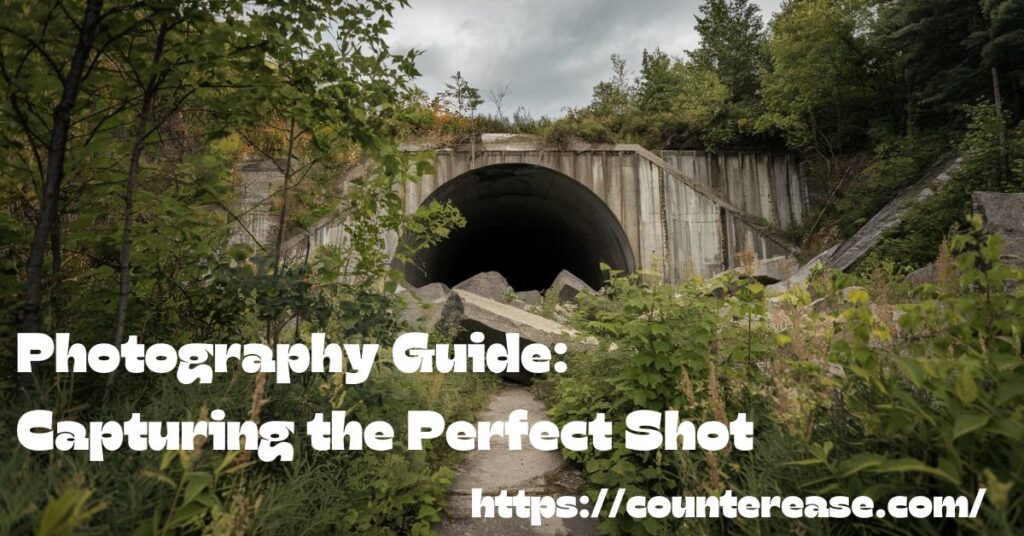
External Shots:
- Dawn: Portal silhouettes
- Dusk: Light painting
- Midday: Detail work
- Overcast: Even lighting
Internal Photography:
1.Light Painting Techniques
- 30-second exposures
- Moving light sources
- Multiple flash points
- Color gel effects
2.Architectural Details
- Tile patterns
- Structural elements
- Decay patterns
- Light/shadow play
3.Creative Approaches
- Human subjects for scale
- Leading lines
- Reflection shots
- Abstract patterns
Conservation and Future Plans
The Pike2Bike initiative continues working to preserve this unique piece of American history.
Current Projects:
- Trail surface improvements
- Safety barrier installation
- Historical marker placement
- Vegetation management
- Structural monitoring
Future Development Plans:
- Visitor center construction
- Additional parking areas
- Interpretive displays
- Expanded trail network
- Regular guided tours
Seasonal Visiting Guide
Each season offers unique experiences at Sideling Hill.
Spring (March-May)
- Temperature: 45-65°F
- Precipitation: Moderate
- Crowds: Light
- Wildlife: Active
- Flowers: Peak bloom
Summer (June-August)
- Temperature: 65-85°F
- Precipitation: Occasional thunderstorms
- Crowds: Heavy
- Wildlife: Morning/evening active
- Vegetation: Full growth
Fall (September-November)
- Temperature: 40-70°F
- Precipitation: Light
- Crowds: Moderate
- Foliage: Peak colors
- Photography: Optimal conditions
Winter (December-February)
- Temperature: 20-40°F
- Precipitation: Snow possible
- Crowds: Very light
- Access: Limited
- Photography: Dramatic opportunities
Tips for Special Interest Groups Visiting the Abandoned PA Turnpike Tunnel Trail
The Abandoned PA Turnpike Tunnel Trail isn’t just for casual hikers—it attracts photographers, cyclists, history buffs, and adventure seekers alike.
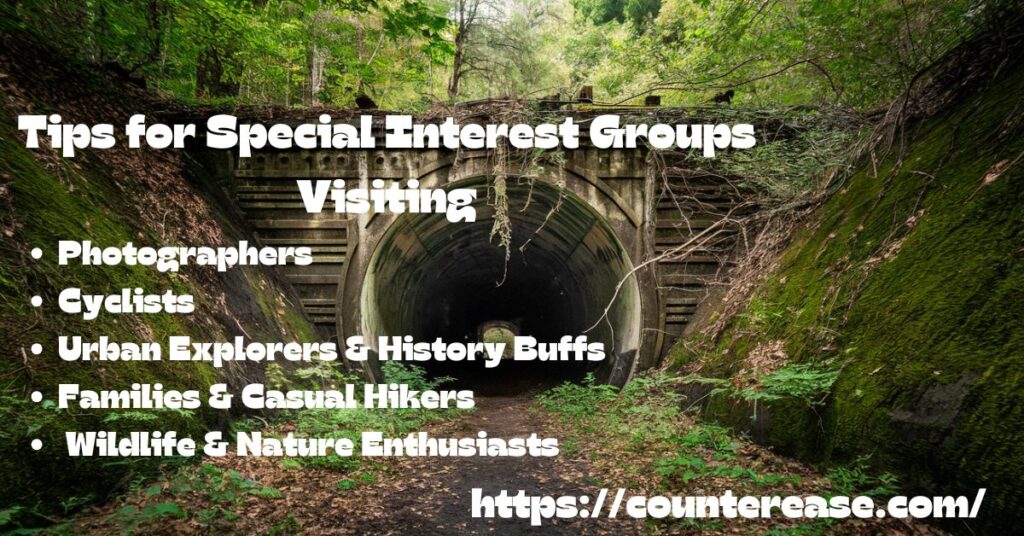
Here’s how different groups can make the most of their visit:
📸 Photographers
The eerie, abandoned look of the trail makes it a paradise for photographers, especially those interested in urban decay, history, and unique landscapes.
- Best Time to Visit: Early morning or late afternoon for soft, natural lighting. Midday light can create stunning contrasts inside the tunnels.
- Equipment: A tripod is essential for long-exposure shots in dark areas. A wide-angle lens can capture the vastness of the tunnels.
- Composition Ideas: Play with silhouettes at the tunnel entrance, use graffiti as colorful focal points, and capture light rays filtering through ventilation shafts.
- Safety Tip: Be mindful of the rough terrain while setting up shots—some areas have cracks and debris.
🚴 Cyclists
The trail is popular among mountain bikers and gravel riders who enjoy rugged, offbeat paths.
- Bike Type: A mountain bike or gravel bike is best since the surface is uneven and covered in loose gravel.
- Lighting: The tunnels are pitch-dark, so a high-lumen headlamp or bike light is crucial.
- Riding Tips: Slow down when entering tunnels—potholes, water puddles, and unseen obstacles can be hazardous.
- Must-Know Fact: Sideling Hill Tunnel is over 1.2 miles long, making it a thrilling ride through near-total darkness.
🏕️ Urban Explorers & History Buffs
This trail offers a rare glimpse into the past, making it a perfect destination for those fascinated by abandoned places and forgotten infrastructure.
- Historical Highlights: The tunnels were part of the Pennsylvania Turnpike, abandoned in 1968 due to outdated design. Look for faded road markings and remnants of old signs.
- Key Locations: The Sideling Hill and Rays Hill tunnels are the most famous sections. Don’t miss the areas where nature is reclaiming the highway.
- Respect the Space: While exploring, avoid vandalizing or removing artifacts—preserving the site keeps it fascinating for future visitors.
👨👩👧👦 Families & Casual Hikers
For families and those looking for a relaxed adventure, the trail offers a mix of history and light hiking.
- Kid-Friendly Fun: Bring flashlights to make tunnel walks more exciting for children. The echo inside tunnels adds to the thrill.
- Walking Conditions: The path is mostly flat but can be uneven, so wear comfortable, supportive shoes.
- Bring Essentials: There are no restrooms or water stations, so pack water, snacks, and first-aid supplies.
- Best Part for Kids: The tunnel graffiti and the chance to walk through a “ghost highway” make this an unforgettable experience for young explorers.
🦇 Wildlife & Nature Enthusiasts
The abandoned highway may seem lifeless at first, but it’s full of nature reclaiming the land.
- Tunnel Wildlife: Bats sometimes roost in the tunnels, so avoid disturbing them. Flash photography inside tunnels can startle them.
- Seasonal Beauty: Spring brings wildflowers, while fall showcases stunning foliage along the trail.
- Birdwatching: The quiet, undisturbed sections of the trail attract birds and small wildlife. Bring binoculars for a closer look.
No matter your interest, the Abandoned PA Turnpike Tunnel Trail has something special to offer. Whether you’re there for photography, biking, history, or just a unique adventure, this hidden gem provides an unforgettable experience. Just come prepared, respect the space, and enjoy a rare glimpse into a forgotten piece of Pennsylvania’s past.
FAQs
1. How long is the Abandoned PA Turnpike Tunnel Trail?
About 8.5 miles round-trip, including two tunnels.
2. Is the trail safe?
Yes, but tunnels are dark and slippery. Bring a flashlight and wear sturdy shoes.
3. Do I need a permit?
No, the trail is open to the public.
4. Where do I park?
A gravel parking area is near Breezewood, PA.
5. Can I bike through the tunnels?
Yes, but use a strong headlamp or bike light.
Final Thoughts
The abandoned-pa-turnpike-tunnel-trail is more than just a path—it’s a journey through history. This short trail gives a rare look at an old highway left behind by time. Cracked pavement, towering tunnels, and nature’s slow takeover make it a one-of-a-kind place. Whether you walk or bike, every step brings a mix of mystery and nostalgia.
If you love hidden spots, the abandoned-pa-turnpike-tunnel-trail is worth the visit. The eerie silence, graffiti-covered walls, and fading road signs tell a quiet story of the past. It’s a trail that feels different from the rest, offering both adventure and history in one trip.

Asia Jenni is a passionate travel writer and expert author on CounterEase.com. With a deep love for exploration, she shares insightful travel guides, tips, and destination recommendations, helping travelers discover new places with ease. Her expertise in curating memorable trips and her engaging writing style make her a valuable resource for anyone looking to plan their next adventure.
